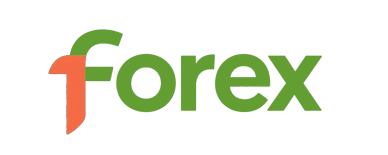Teaching Forex Trading Operations: Mastering the Voice of Global Financial Markets
Introduction to Forex Trading: Mastering the Global Market from Scratch
Foreign exchange trading, also known as foreign exchange market trading, is one of the largest and most liquid financial markets in the world. Every day, investors, banks and institutions around the world trade trillions of dollars in this market in search of opportunities for wealth growth. For newcomers, forex trading is full of opportunities as well as challenges. Through systematic study and practice, you can fully grasp the laws of this market and succeed in it.

What is Forex Trading?
Foreign exchange trading refers to the act of exchanging one currency for another in the international foreign exchange market. Simply put, it is buying one currency and selling another at the same time, hoping to profit from exchange rate fluctuations. The foreign exchange market has no fixed trading venue, but is traded through banks, brokers and electronic trading platforms.
Three Advantages of Forex Trading
High liquidity: The forex market is a global 24-hour market, which means you can enter the market to trade at any time.
Low threshold: Compared with the stock or futures market, the threshold of foreign exchange trading is low, and novices can start learning and practicing with small amounts.
Two-way trading mechanism: whether the market is up or down, you have the opportunity to profit.
How to choose a Forex trading platform?
Choosing a reliable forex trading platform is the key to successful trading. A good platform should have the following characteristics:
Regulatory Compliance: Ensure that platforms are regulated by authoritative financial regulators, such as the UK FCA or the Australian ASIC.
Low spread: The spread is the difference between the bid price and the ask price, and the low spread means higher trading efficiency.
User-friendly interface: The platform interface should be simple and intuitive, easy to operate and analyze.
Rich educational resources: The platform should provide rich learning resources such as tutorials, videos and demo accounts.
The basic operation process of foreign exchange trading
Account opening: Choose a reliable platform to complete the account opening process and merge it into gold.
Market Analysis: Determine exchange rate movements through technical or fundamental analysis.
Order trading: based on the results of the analysis, choose to buy or sell a currency pair.
Risk management: set stop loss and take profit, control risk and ensure the safety of funds.
Forex Trading Advanced: Mastering Core Skills and Strategies
1. Technical analysis: insight into market trends
Technical analysis is one of the most important tools in Forex trading. By analyzing price movements and volume data, traders can predict future exchange rate changes. Common technical analysis tools include:
K-line chart: The opening, closing, high and low prices of the price can be clearly seen through the K-line chart.
Moving Average (MA):MA can help traders identify the strength or weakness of a price trend.
Relative Strength Index (RSI): The RSI is used to determine whether a price is overbought or oversold, thereby predicting the point of price reversal.
2. Fundamental analysis: capturing the nature of market volatility
Fundamental analysis is a method of predicting exchange rate movements by studying economic data and market news. Common fundamental analysis indicators include:
Interest rate levels: High interest rates usually lead to currency appreciation.
GDP growth rate: Countries with strong GDP growth tend to have stronger currencies.
Inflation rate: High inflation can lead to currency depreciation.
Political and economic events: such as elections, policy changes, etc. can trigger market volatility.
3. Risk management: the winning magic of foreign exchange trading.
No matter how good your trading strategy is, if you don't pay attention to risk management, you can lose all your principal in one loss. Here are some effective risk management techniques:
Set Stop Loss: Set a stop loss point before a trade to limit the maximum loss.
Control your positions: Don't put all your money into one trade, diversify your investments to reduce risk.
Money management: Ensure that the risk of each transaction does not exceed 2-3% of the account funds.
Emotion management: Avoid making impulsive decisions because of greed or fear.
4. Simulated trading: improve skills from practice
Before the actual trading, it is recommended to practice through a demo account. Simulated trading can help you become familiar with the operation of the platform, verify the effectiveness of trading strategies, and avoid actual losses due to operational errors.
5. Continuous learning: the eternal pursuit of the foreign exchange market
The Forex market is an ever-changing market, and no one strategy can work forever. Therefore, continuous learning and adapting to market changes is a must for every trader. You can constantly improve your trading by reading books, taking courses, and following market news.
Conclusion: Forex trading is a battle of wisdom and patience.
Forex trading is not only an investment activity, but also a test of wisdom, patience and discipline. Through systematic study and continuous practice, you can find your own wealth opportunities in the foreign exchange market. Remember, successful traders do not rely on luck, but on knowledge and strategy. I hope this article can provide you with some practical guidance to help you go further and more steadily on the road of foreign exchange trading.

























